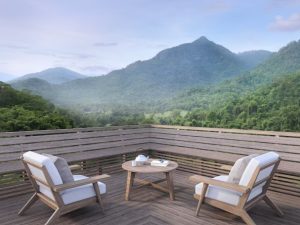From luxury hotels to more economical accommodations, Spain has one of the largest hotel infrastructures in Europe, and is also one of the world’s major tourism powers. Customers have a wide range of choices from which to decide on their perfect accommodation, so it is crucial for businesses to know the compset or competitive set. Through the use of this tool, it is possible to keep any business updated, relevant and competitive in the market.
What is the compset and why is it important for my business?
The competitive set, also known as compset, is a term used to refer to the set of direct competitors of a tourism company or establishment. This includes those accommodations, hotels or tourism businesses that offer similar services and compete for the same customers in a given geographic area.
The compset analysis is an important tool for the management and strategic planning of a tourist accommodation company, since it allows to know the strengths and weaknesses of competitors, compare prices and services offered, and thus establish strategies to remain competitive in the market.
Before starting to use this tool it is important to keep in mind that for a compset to be effective it is advisable to include a minimum of 5 and a maximum of 10 competitors, including the host being compared. If too many accommodations are included, it may be difficult to draw useful conclusions and make appropriate decisions.
In addition, before starting to analyze the competitors, it is essential to know the value proposition and the differentiating elements of our tourist accommodation. Otherwise, we will not be able to properly evaluate our service in comparison with the rest.
What elements should I take into account to develop my compset?
Once we are clear about the differential value of our proposal, we must select those accommodations that are direct competitors of our service. The key to determining whether a business should be part of our compset or not is to know if a traveler considers it as an alternative in the choice of accommodation when visiting a destination.
There are some basic factors to consider when selecting competitors:
- Type of lodging: we will include lodgings with similar offers, that is to say, those that compete directly in the market with our proposal. The objective is to take into account those businesses that potential customers looking for accommodation consider as alternatives for their stay.
- Category of the accommodation: it is important that the accommodations included in the compset are of a similar category level to the accommodation being compared. For example, if the compset of a 4-star hotel is being carried out, the accommodations analyzed should be 4-star hotels, without forgetting the indirect competition.
- Geographic location: travelers consider the location of an accommodation as one of the determining factors in their decision making, therefore, it is important that the accommodations included in the compset are located in a similar geographic area and compete for the same market. While it is true that considering the category of accommodation is a good starting point for selecting competitors, the search should not be limited to this alone. Nowadays, customers choose from a large number of available accommodations, whether they belong to the same category or not.
- Facilities and quality of service: it is necessary that the accommodations included in the compset offer services and facilities similar to those of the accommodation being compared, such as swimming pools, restaurants or spas, among others.
- Size in number of rooms: the size of the accommodations included in the compset is also important, as establishments of different sizes may have different strategies and objectives.
- ADR (Average Daily Rate) and pricing strategy: price is one of the most important factors that customers consider when choosing accommodation. If competitors’ ADR and pricing strategies are more attractive, customers may opt for the competition, losing market share. In addition, by knowing the ADR and the competitor’s pricing strategy, appropriate pricing strategies can be established to remain competitive in the market. For example, if most of the accommodations in the area have a lower ADR, it would be advisable to adjust prices to attract more customers and thus remain competitive with the rest.
- Online reputation and social media presence: Today, most customers use digital media and online search engines to choose their accommodation and compare possible options. Reviews and comments from previous guests play a crucial role in the decision-making process. A good online review can attract new customers. It is important to take into account the online reputation of our competitors, not only to know how satisfied customers are with their services, but also to identify the elements that generate bad ratings. By understanding these factors, we can implement improvements to our own services and highlight our proposition in the marketplace by offering a superior hosting experience. In addition, it is convenient to know what online communication strategies our competitors use, from which channels they have presence, if they have carried out influencer strategies, or even what type of content they offer to communicate their message.
As discussed above, it is essential to keep in mind that when considering competition we should not only focus on direct competitors, but also on other alternatives. If our business is a hotel, but our potential customers also consider staying in hostels, campgrounds or other types of accommodation, we should include them in our competitor analysis, as they are substitutes for ours and competing for the same market.
There are several tools that allow us to obtain information about other accommodations. For example, Booking.com offers an extremely useful tool that allows you to know which accommodations have been viewed by other travelers who have also reviewed yours. This data is very valuable to start analyzing our set of competitors and perform a competitive set.
Conclusion
As we have seen, the compset or competitive set is a crucial tool for the management and strategic planning of a tourist accommodation company, since it allows to know the strengths and weaknesses of competitors, compare prices and services offered, and establish strategies to remain competitive in the market.
To develop a compset it is essential to know the value proposition and differentiating elements of the tourist accommodation being compared, bearing in mind factors such as type and category of accommodation, geographical location, facilities and quality of service, size (in number of rooms), pricing strategy and online repitation and presence in competitors’ social networks.
With a good compset analysis, tourism companies can gain a competitive advantage and improve their positioning in the market, attracting new customers and maintaining their loyalty, which makes it a very valuable tool for any type of business. As we have seen, whatever accommodation you have, the key question will always be: “Where does the client book if not at my hotel?”





 by
by 
